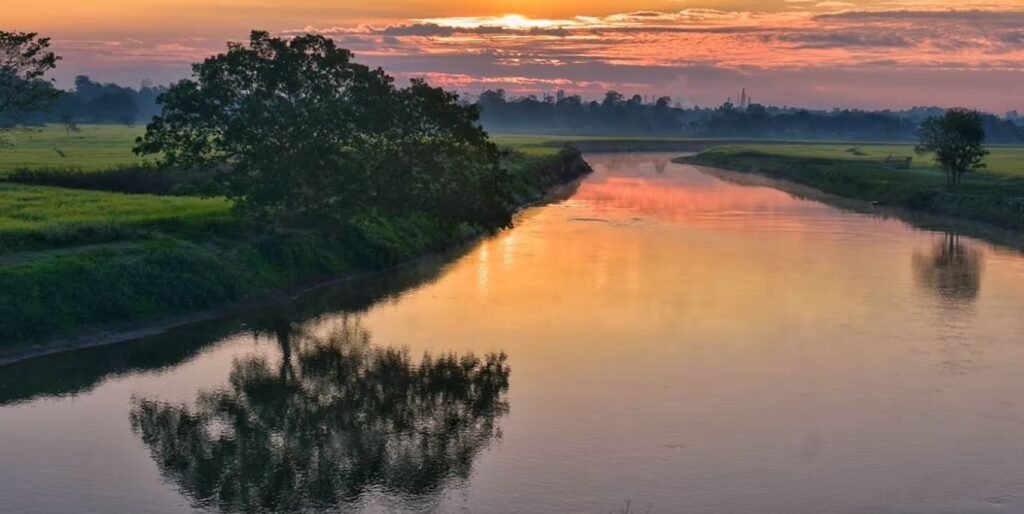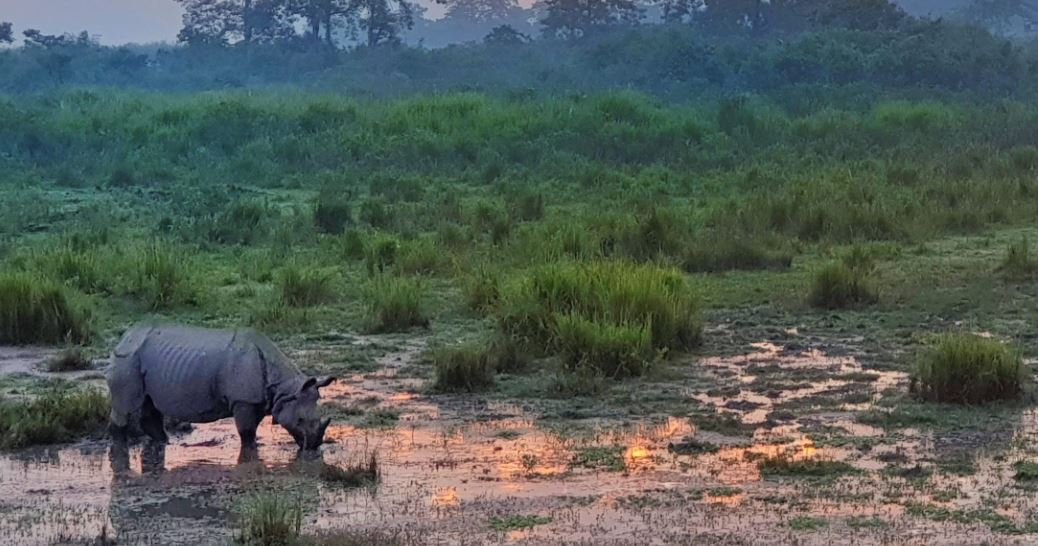Kaziranga National Park is one of India’s most diverse wildlife zones and a UNESCO World Heritage Site. Kaziranga is globally famous for its population of the rare one horned rhinoceros and many other rare animal and bird species. The National Park spreads across the floodplains of the Brahmaputra River. Kaziranga is more than just a wildlife sanctuary; it’s a living story of conservation, culture, and courage.
Why is it Named Kaziranga: The Origin of its Name
The name Kaziranga has deep cultural roots. There’s a saying among the local residents that it comes from two lovers named Kazi and Ranga whose tragic story gave the land its name. Another theory traces it to the Karbi word Kajir-a-rong, meaning “village of Kajir.” Both stories show us how closely nature and folklore thrived in this region.
History and Evolution of Kaziranga
In the late 19th century, due to excessive hunting the park was in great danger but the turning point came in 1904, when Lady Mary Curzon, wife of the Viceroy of India, visited the area and found no rhinos. Her concern led to its protection in 1908 as a Reserve Forest.
Over the next decades, it was upgraded to a Wildlife Sanctuary (1950), a National Park (1974), and finally recognized by UNESCO in 1985.
Today, Kaziranga is home to over 2,400 one-horned rhinos, making it the largest rhino habitat in the world. The park also shelters elephants, swamp deer, wild buffalo, and the Royal Bengal Tiger, earning it the status of a Tiger Reserve too.
Geography and Biodiversity of Kaziranga
The National Park covers an area of approximately 430 sq. km and lies on both sides of the Brahmaputra River. The park includes tall elephant grass, dense forests, and interconnected wetlands fed by rivers such as the Dhansiri, Mora Diphlu, and Mora Bharmaputra.

The park’s ecosystem thrives on annual floods from the Brahmaputra and sustains over 35+ mammal species and over 500+ species of birds annually. The combination of grasslands, marshes, and forests makes Kaziranga one of the most biologically diverse regions in India.
How to Reach Kaziranga National Park
Kaziranga is located about 200 km from Guwahati, making it easily accessible by road. The nearest airport is Lokpriya Gopinath Bordoloi International Airport in Guwahati, from where travelers can hire a taxi or rent a car to Kaziranga for a comfortable road trip to the park.
Taxination’s car rental in Kaziranga provides the best taxi service to Kaziranga for visitors. Whether you’re looking for a taxi from Guwahati to Kaziranga or a car rental in Guwahati, Taxination offers a safe and smooth journey through the beautiful routes of the Brahmaputra Valley.
Best Time to Visit Kaziranga
The park remains open from November to April each year. The winter and early spring months (December–March) are considered the best time to visit, with pleasant weather and increased chances of spotting wildlife during jeep or elephant safaris. The park remains closed during the monsoon season (May–October) due to flooding.
Safari and Tourism Information before Visiting Kaziranga
Kaziranga offers jeep safaris and elephant rides across its four main tourism zones: Central (Kohora), Western (Bagori), Eastern (Agaratoli), and Burapahar Range.
Each zone offers unique experiences:
- Bagori Range: Best for rhino sightings.
- Kohora Range: Balanced for both rhinos and elephants.
- Agaratoli Range: Popular for birdwatching.
- Burapahar Range: Offers forest trails and scenic drives.
Kaziranga National Park is the pride of Assam. From its natural wealth, conservation success, history, folklore to its rich biodiversity and natural beauty, Kaziranga offers an experience that’s both educational and inspiring.
If you’re planning your next wildlife adventure, make it a road trip to Kaziranga. Book your car rental with Taxination and explore Kaziranga National Park with us because great journeys begin with smooth rides.



